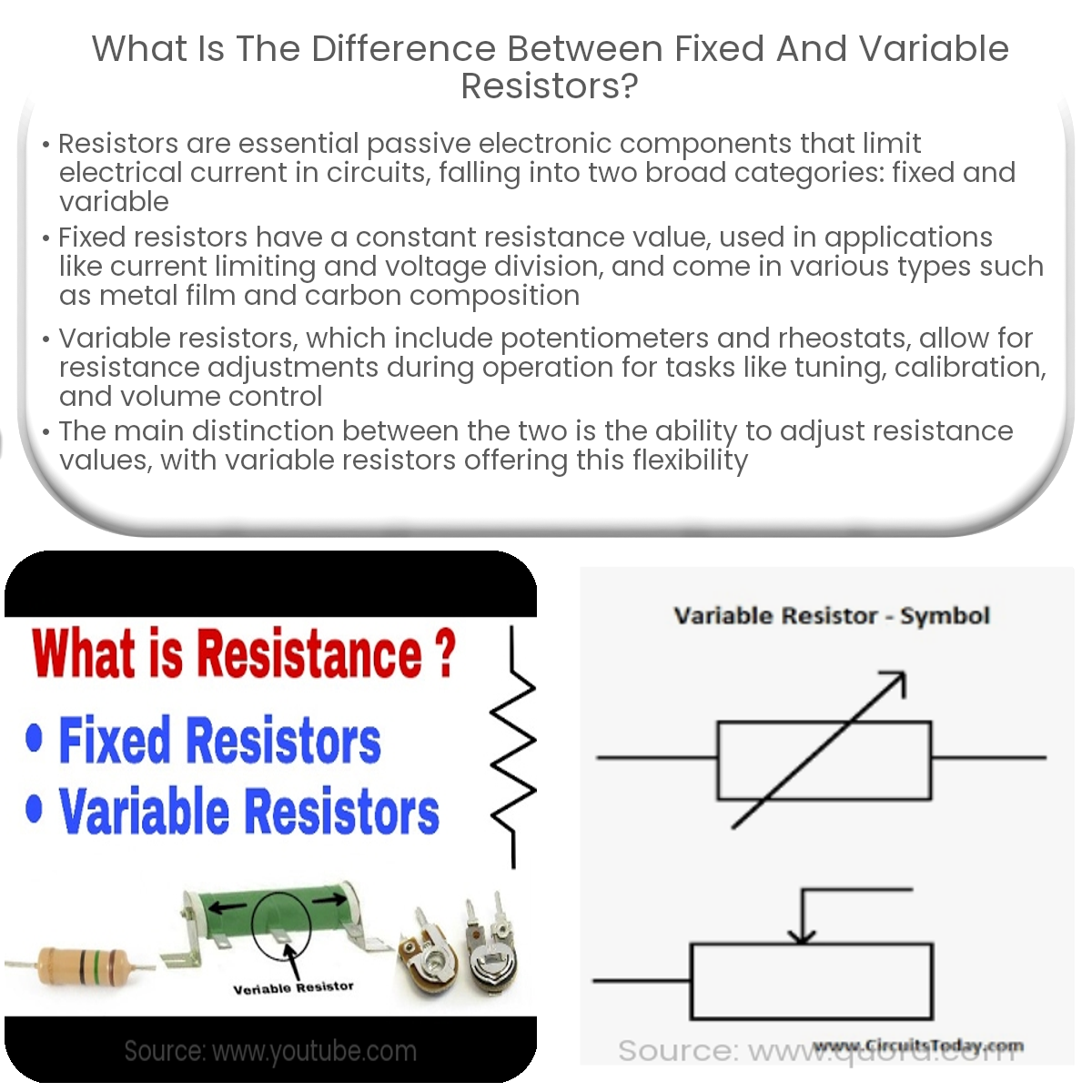Fixed resistors have a constant resistance value, while variable resistors allow for adjustments in resistance to control voltage, current, or signal levels.
Fixed vs. Variable Resistors
Resistors are passive electronic components that limit the flow of electrical current in a circuit. They play a crucial role in controlling voltage levels, protecting sensitive components, and managing power consumption. Resistors are broadly categorized into fixed and variable resistors, each serving different functions and applications. This article explores the key differences between fixed and variable resistors.
Fixed Resistors
As the name suggests, fixed resistors have a constant resistance value that does not change during their operation. They are designed to offer a specific amount of resistance in a circuit, limiting the flow of current accordingly. Fixed resistors come in various types based on their construction, such as carbon composition, metal film, wirewound, and foil resistors. The main characteristics of fixed resistors include:
- Constant resistance value
- Available in a wide range of resistance values and power ratings
- Used for current limiting, voltage division, and other general-purpose applications
Variable Resistors
Variable resistors, on the other hand, allow for the adjustment of their resistance value during operation. They are used in applications where it is necessary to change the resistance in a circuit to control voltage, current, or signal levels. Variable resistors can be further divided into two categories: potentiometers and rheostats. The main characteristics of variable resistors include:
- Adjustable resistance value
- Used for tuning, calibration, and volume control in electronic devices
- Available in a variety of designs, such as rotary and slider types
Potentiometers
Potentiometers are a type of variable resistor with three terminals. They consist of a resistive element, typically a carbon or metal film, and a movable wiper that slides along the resistive element. The position of the wiper determines the resistance between the wiper and the two fixed terminals. Potentiometers are commonly used for voltage division, volume control in audio equipment, and tuning in electronic circuits.
Rheostats
Rheostats are another type of variable resistor, typically with two terminals. They are designed to control the flow of current in a circuit by adjusting the resistance between the terminals. Rheostats are often constructed using wirewound or carbon composition materials and are used in applications such as dimmer switches, motor speed control, and power regulation.
Conclusion
The main difference between fixed and variable resistors lies in their ability to adjust resistance values. Fixed resistors offer a constant resistance value, while variable resistors, including potentiometers and rheostats, allow for adjustments in resistance to control voltage, current, or signal levels in various applications.


